Cervical Spondylosis
What Is Cervical Spondylosis?
Cervical spondylosis refers to diseases that deformation and stenosis of cervical spine or intervertebral foramen caused by degeneration of cervical vertebra, thereby, stimulating or compressing cervical spinal cord, nerve root. Cervical spondylosis is clinically manifested as pain in neck and shoulder, dizziness, headache, numbness of upper limbs, and muscular atrophy, in severe cases, spasm of both lower limbs and difficulty in walking, and even paralysis of all limbs, fecal and urine disorder can be caused.
Cervical spondylosis is more commonly seen in the middle-aged and old people, but with change of lifestyle and deficiencies of preventive health care, cervical spondylosis is also seen in adolescents, and its incidence in males is higher than that of females.
What Are Types of Cervical Spondylosis?
Its clinical manifestations vary according to different lesion sites, compressed tissues and compressed degrees. Based on clinical symptoms, cervical spondylosis can be roughly classified into cervical spondylotic radiculopathy, cervical spondylosis myelopathy, cervical spondylosis of vertebral artery type and sympathetic cervical spondylosis. However, clinically the symptoms and signs of various cervical spondylosis are mixed, which is called mixed type of cervical spondylosis.
What are Causes of Cervical Spondylosis?
1. Chronic strain: if head and neck remain a single gesture for a long period of time, hyperosteogeny is easily developed, which further affects local nerves and blood vessels, and then resulting in cervical spondylosis.
2. Trauma: if people have different degrees of cervical lesions before the trauma, it may directly induce symptoms of cervical spondylosis.
3. Unhealthy posture: such as lowering head down and lying on bed to watch TV or read a book for a long time, it will make muscle in neck remain a state of fatigue, which is prone to cause injury of neck.
4. Dysplasia of cervical structures: congenital small spinal stenosis and cervical degeneration are pathogenic basis of cervical spondylosis, so people with those diseases have one time of incidence rate higher than the normal people.
What are Symptoms of Cervical Spondylosis?
1. Neck and shoulder pain will spread to head and upper limbs.
2. One side of shoulder and back appear sense of heaviness, upper limbs weakness, and numbness of fingers.
3. Reduced sense of touch and sensation of body skin, inability to hold things by hands.
4. Lower limbs weakness, instability to walk, feet numbness.
5. Fecal and urine incontinence, sexual dysfunction, and even paralysis of limbs.
6. Some patients with cervical spondylosis are accompanied by dizziness, in severe cases, nausea and vomiting may develop, and a few patients may appear vertigo and cataplexy.
7. When involving sympathetic nerve, headache, blurred vision, swollen or dry eyes, tinnitus and flustered will appear, and some even develop bloating.
What Are the Diagnostic Methods for Cervical Spondylosis?
1. Cervical vertebra CT: it can clearly show hyperplasia and calcification of cervical vertebra and can clearly diagnose spinal canal stenosis and formation of osteophyma in posterior lumbar.
2. Cervical vertebra MRI: it can clearly show spinal cord compressed due to herniated disk. As a routine imaging examination before surgery, MRI can be used to confirm segments for surgery and extent of resection.
3. Electromyography: it is applicable to patients with cervical spondylosis accompanied by symptoms of muscle weakness. It can be used to do localization diagnosis of involved nerves and muscles, and identify cervical spondylosis from neurological diseases such as lateral sclerosis and nerve degeneration.
What Are Treatment Methods for Cervical Spondylosis?
1. Conservative therapy: it is applicable to patients with mild symptoms, including orally taken medication therapy, traction and physiotherapy.
2. Surgery: it is applicable for patients with more serious symptoms and with no improvement after conservative treatment, including anterior and posterior cervical surgery.
3. Traditional Chinese medicine: traditional Chinese medicine is broad and profound, with no need to operate, and it has effects of overall conditioning balance and strengthening body function.
4. Orthopedic minimally invasive therapy: this therapy brought by Modern Cancer Hospital Guangzhou uses the latest scientific technology, such as microendoscopic discectomy (MED) and percutaneous lumbar discectomy (PLD).
What Are Nursing Methods After Surgery?
1. After 1-2 weeks of surgery patients can do relaxation and contraction of limb muscle and joints, such as clenching a fist and unclenching it.
2. When patients go away from bed, their necks should fixed by cervical collar, and severe neck rotation should be avoided.
3. Patient’s neck should be fixed 2-4 weeks by cervical collar, and when lying on the bed, cervical collar can be removed.
4. Patients can enhance functional exercises of neck, such as stretching neck forward, backward and moving left and right.
5. Patients should prevent accidental injury, such as excessive neck flexion, excessive rotation and acute shake of head and neck, etc.
What kinds of supports can be obtained?
Practice proves that the clinic team services composed by multiple disciplines like oncosurgery, oncology, pathology, imageology and anesthesia doctors as well as professional nurses, can provide patients with most effective, most suitable and most economic treatment plan, and also can greatly improve the therapeutic effect of treating cancer patients.
“One station” medical system constructed by Modern Cancer Hospital Guangzhou combining multiple disciplines, can perform comprehensive diagnosis and treatment for patients under the condition of without adding patients’ burden. Therefore, on one hand, it can provide all-round and heartfelt medical services, and on the other hand, it improves medical efficiency and level. There are many channels can be applied to conduct the communication between patients and doctors, like online consultation, email, telephone conversation, and face-to-face consultation. All these consultation services can effectively help patients to fight the cancer. While the medical team faced by the patients includes doctors, nurses, dietitians, interpreters and so on to meet various demands in different level of different countries. Patients would be more confident under the unobstructed communication environment to cooperate the hospital to diagnose and treat the diseases.
-
 Cryotherapy...
Cryotherapy...
Cryotherapy freezes tumor by the temperature of 120℃~ 165℃ below zero in a dozen of seconds and turn into ice ball. The tumor inside ice ball is trapped in a "starving and extre...more>>
-
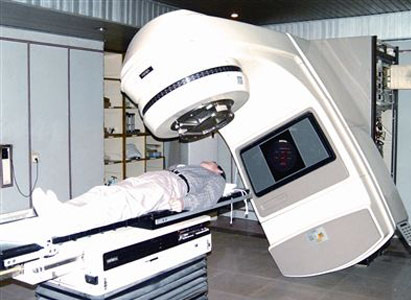 Radiation Therapy...
Radiation Therapy...
Radiation therapy or radiotherapy is a therapy using ionizing radiation, generally as part of cancer treatment to control or kill malignant cells, which can be divided into systemic...more>>
-
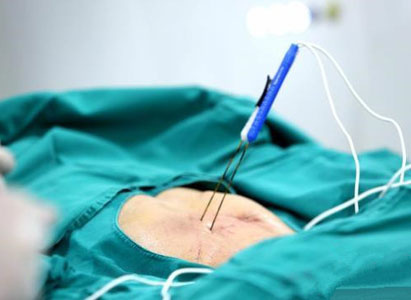 Introduction of Nanoknife Techn...
Introduction of Nanoknife Techn...
Nanoknife is a brand-new cutting-edge ablation technology for tumor treatment. It breaks the membrane of tumor cells with high voltage pulses from electrode probes, resulting in mul...more>>
-
 Successful case of nanoknife ab...
Successful case of nanoknife ab...
Modern Cancer Hospital Guangzhou successfully completed a case of nanoknife which was performed under CT guide and general anesthesia to ablate pancreatic cancer....more>>
-
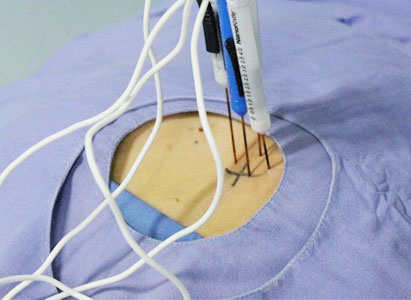 Nanoknife:safety and quick re...
Nanoknife:safety and quick re...
Nanoknife is the latest, most advanced cancer treatment. Nanoknife is suitable for pancreatic cancer treatment, which can raise the survival rate to more than 2 times for them....more>>
-
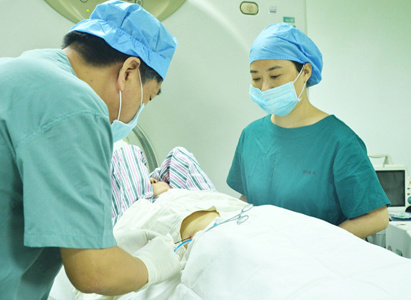 The Latest Direction of Tumor T...
The Latest Direction of Tumor T...
Microwave ablation (MWA) is a form of minimally invasive physical therapy with the highest inactivation rate at present. It is used in interventional radiology to treat cancer in Mo...more>>
-
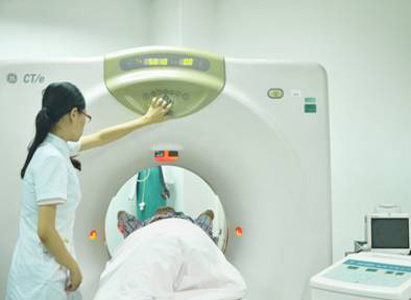 Microwave Ablation (MWA): Opene...
Microwave Ablation (MWA): Opene...
Microwave ablation (MWA) is a form of minimally invasive physical therapy with the highest inactivation rate at present. It is used in interventional radiology to treat cancer in Mo...more>>
-
 Cryotherapy and Lung Cancer...
Cryotherapy and Lung Cancer...
Currently, the traditional treatments available for lung cancer are surgery, chemotherapy and radiotherapy. However, with the advancement in the medical technologies, minimally inva...more>>
-
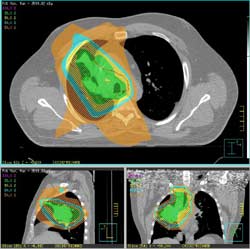 Photon Knife/3D Conformal Radia...
Photon Knife/3D Conformal Radia...
Photon Knife uses the targeting information to focus precisely on the tumor, while avoiding the healthy surrounding tissue. This exact targeting are more effective in shrinking and ...more>>
-
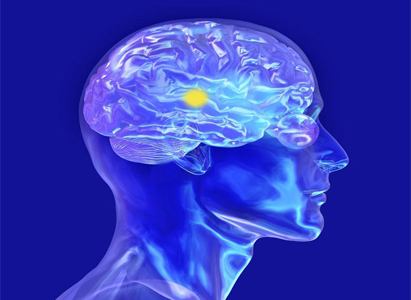 New combination therapy for bra...
New combination therapy for bra...
The new method developed by Modern Cancer Hospital Guangzhou to treat brain tumor: photon knife + targeted therapy, if combined with traditional Chinese medicine immunity, can effec...more>>
-
 Interventional Therapy:Starves ...
Interventional Therapy:Starves ...
What is interventional therapy? Interventional therapy is a mini-invasive therapy that under the guidance of medical image equipment. It mainly has two categories: vascular interven...more>>
-
 Green Chemotherapy...
Green Chemotherapy...
MCHG modified conventional chemotherapy with means, minimizing its side effects while maximizing the efficacy. With the advantages of reduce side effects greatly, those chemotherapi...more>>
Q&A Portion
- Question:Doc, I want to ask particle implantation, I was diagnosed breast cancer last year.
- Answer:Particle implantation is to implant the radioactive particles inside the tumor by percutaneous puncture. The radiation releases from the particle can constantly kill the tumor cells without hurting other organs or tissues around tumor. Actually it is an internal radiotherapy with less side effects and small complications. That is depending on individual condition. We need to study your case first then we can know if this treatment is the best for you. You can send us your medical reports, records, imaging materials like CT scans, MRI etc. for our specialist team study first. Then we would offer you the treatment plan accordingly.




